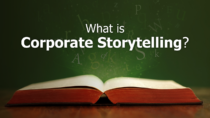Inclusive storytelling (IS) has emerged as a powerful tool to foster understanding, empathy, and connection in a diverse world. By embracing diverse perspectives and amplifying marginalized voices, IS breaks down barriers, challenges stereotypes, and promotes a more inclusive society.
This article explores the significance of IS, its impact on fostering empathy and social progress, and the role it plays in creating a sense of belonging for all individuals. Join us on this journey of discovery as we delve into the power of IS in embracing diversity and amplifying voices.
What is Inclusive Storytelling?
For thousands of years, stories have been an integral part of human culture, serving as a means of communication, education, and entertainment. Throughout history, storytellers have conveyed narratives that reflect the values, norms, and beliefs of their societies. However, these stories often focused too much on the experiences and perspectives of the dominant group, leaving out or excluding different opinions and viewpoints.
IS represents a paradigm shift in the world of narrative representation, aiming to engage and amplify the voices of individuals from all layers of society. It celebrates diversity, challenges stereotypes, and fosters empathy and understanding among people and communities.
Understanding Inclusive Storytelling
At its core, IS aims to dismantle entrenched stereotypes and prejudices that have permeated narratives for centuries. By including characters with diverse backgrounds and identities, storytelling expands beyond the narrow perspective of the dominant group.
This expansion enables a more comprehensive understanding of the human experience and provides opportunities for underrepresented communities to see themselves authentically portrayed in stories.
What are the 4 types of storytelling?
There are various ways to classify storytelling, and below are four common types:
- Oral: This is the traditional form where stories are passed down orally from generation to generation, often using gestures, facial expressions, and vocal modulations.
- Written: Stories recorded in written form, such as novels, short stories, and poetry.
- Visual: Conveying narratives through visual mediums like films, television shows, comics, and graphic novels.
- Digital: Utilizing digital tools, multimedia, and interactive elements to create captivating and immersive stories, frequently found in video games, virtual reality, and online storytelling platforms.

Why is storytelling important in inclusion?
Storytelling plays a vital role in fostering inclusion for several compelling reasons:
- Amplifying Diversity of Perspectives: Inclusion recognizes and embraces the voices of people from different layers of society. Narrative provides a platform for exchanging diverse experiences, perspectives, and identities, allowing marginalized communities to be heard and seen;
- Cultivating Empathy: By listening to or reading stories that reflect the experiences of others, people empathize with their struggles, joys, and challenges. This emotional connection bridges gaps between different groups and promotes a deeper understanding of one another;
- Challenging Stereotypes and Prejudices: Narratve has the power to confront and dismantle long-standing stereotypes and prejudices rooted in dominant narratives. Positive and authentic portrayals of underrepresented groups help break down biased perceptions;
- Fostering Representation and Belonging: Inclusion is about creating a sense of belonging for everyone. When people from diverse backgrounds see themselves represented in stories, it validates their existence and contributes to a sense of acceptance and belonging;
- Enhancing Cross-Cultural Understanding: Stories about different cultures and communities allow for an understanding of their traditions, values, and customs. This fosters cross-cultural empathy and awareness of the richness of global diversity;
- Inspiring Change and Social Progress: Stories have the potential to inspire social change by shedding light on social issues, discrimination, and inequality. They can mobilize individuals and communities toward creating a more equitable and just society;
- Improving Learning and Education Effectiveness: Inclusion in educational materials and programs exposes students to a wider range of experiences and histories, facilitating comprehensive education;
- Creating Role Models: Stories present individuals from underrepresented communities as role models and heroes, inspiring others to strive for greatness regardless of their backgrounds;
- Connecting Human Experiences: Despite our differences, stories unite us through shared human experiences. Embracing diversity in narratives allows us to recognize our interconnectedness and strengthen bonds between communities;
- Encouraging Collaboration and Unity: Storytelling fosters collaboration among narrators representing diverse segments of society. Working together promotes a more IS landscape, reinforcing the idea of unity in diversity.
Storytelling plays a pivotal role in promoting inclusivity by amplifying the voices of diverse individuals, fostering empathy, challenging stereotypes, and acknowledging the unique identities and experiences that constitute our global society.
By embracing IS, we take significant strides toward creating a more compassionate, accepting, and interconnected world.
Challenges and Strategies
One significant issue is the underrepresentation of marginalized communities in mainstream media and narratives. This lack of representation perpetuates stereotypes and can lead to a limited understanding of diverse experiences:
- Stereotypes and Information Distortion: Creating such stories carries the risk of unintentionally perpetuating harmful stereotypes or presenting distorted portrayals of certain groups, which reinforces biases and prejudices;
- Resistance to Change: Some viewers or industry representatives may resist IS, preferring traditional or familiar styles, which can hinder the development of inclusive narratives;
- Budget and Resources: Crafting such stories often requires additional research, diverse expertise, and investment in new perspectives, which can be challenging in the face of limited budgets and resources.
Decision-makers in the entertainment industry, such as producers, executives, and publishers, may have their own biases, leading to the rejection or limited reach of inclusive projects.
Strategies for Inclusive Storytelling
By acknowledging and addressing these challenges and implementing these strategies, such storytelling can become a powerful force for positive change, fostering understanding, empathy, and unity among diverse audiences.
Embracing the richness of human experiences and perspectives allows stories to fulfill their potential as catalysts for social progress and cultural transformations.
| Challenges | Strategies |
|---|---|
| Underrepresentation of marginalized communities | Diverse Representation: Include characters from diverse backgrounds and experiences. |
| Stereotypes and Misrepresentation | Authenticity and Own-Voices: Prioritize stories told by individuals from the communities they represent. |
| Resistance to Change | Cultural Sensitivity and Research: Thoroughly research cultures and identities to avoid stereotypes. |
| Budget and Resource Constraints | Collaboration and Consultation: Involve individuals from underrepresented communities in the creative process. |
| Gatekeeping and Bias | Intersectionality: Portray characters with multiple marginalized identities to reflect diverse experiences. |
| Positive Role Models: Create empowering role models from diverse backgrounds to challenge stereotypes. | |
| Educational Initiatives: Use storytelling to educate and raise awareness about different cultures and social issues. | |
| Inclusive Hiring: Encourage hiring diverse talent both on and off-screen, including writers, directors, and actors. | |
| Inclusive Marketing: Ensure marketing campaigns reflect the diversity of the story’s content and target a broad audience. | |
| Advocate for Change: Support initiatives that promote diversity and representation in the entertainment industry. |
Implementing these strategies, storytellers can overcome obstacles and shape narratives that resonate with diverse audiences, contributing to the development of a more compassionate and interconnected society.
Conclusions
Inclusive storytelling has the capacity to bridge divides, challenge stereotypes, and create a more inclusive and empathetic society. By authentically portraying diverse experiences, it nurtures empathy and mutual understanding among people of different backgrounds.
Narrators and media creators play a vital role in shaping narratives that accurately reflect the richness of human diversity, actively striving to include underrepresented voices and expanding their possibilities.
Despite the existing challenges, the potential for positive social change inherent in IS makes it a necessary and transformative endeavor. By embracing inclusivity, we embrace the shared humanity that unites us all, weaving a tapestry of narratives that reflects the true essence of our interconnected world.










